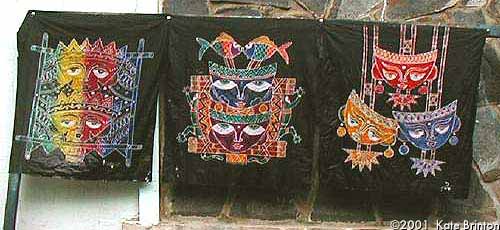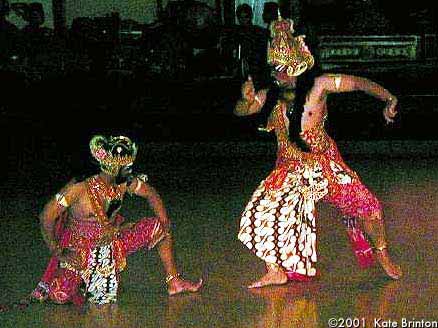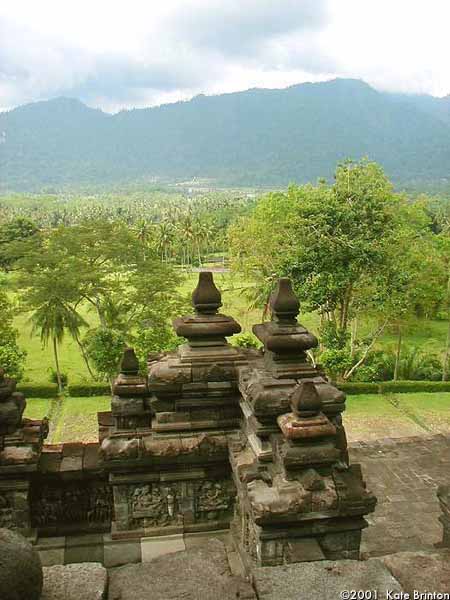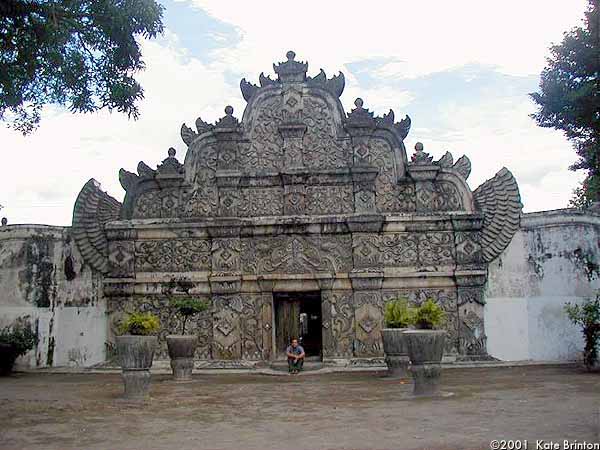Yogyakarta: Ancient Cultures and Techniques
We've spent the last week in Yogyakarta, a large town (almost city) on the island of Java. We like it better than Bali because people here don't harass us to buy things all the time. The batik salesmen can be pretty aggressive, but otherwise people are more laid-back. We've relaxed again, and now respond, "hello!" to people who greet us on the street. Children especially seem to delight in calling "hello!" to us.
~ * ~ Our favorite mode of transportation is becak (pronounced "bechack"). A becak is a small, two-seater carriage on the front, and a bicycle on the back. It is propelled by a man pedalling the bicycle. Becaking is a nice way to go because you get the benefits of a bike (being out in the air, a nice pace but not too fast) without having to pedal in the heat. We've gotten bargaining for becak rides down to a science.
~ * ~ During the week, we took several classes:
COOKING CLASS. After our experience with Balinese cuisine, we wanted to see how Javanese cooking is different. We signed up for a class at a local travellers cafe, Via Via, and learned how to make Rendang Ayam (coconut curry chicken), and some tasty side dishes.
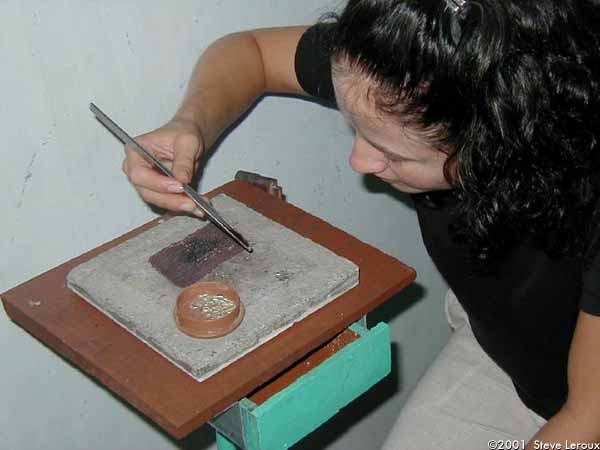
Assembling the pieces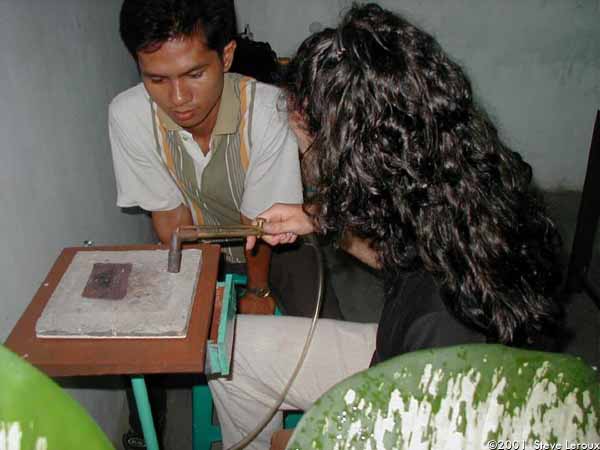
The instructor helping me with the torch
BATIK CLASS. This course took us most of the day and we each made a 18" square batik piece.
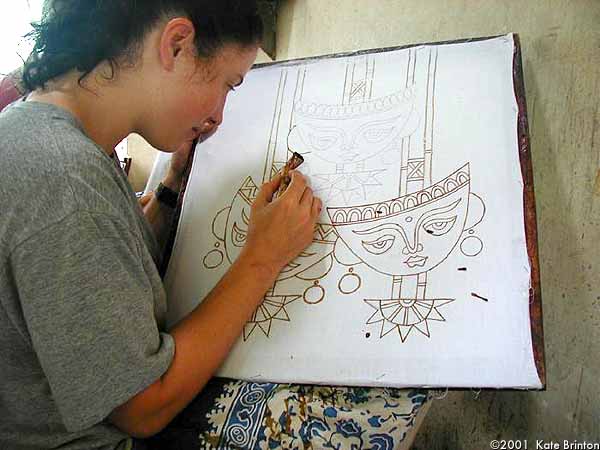
Tracing the lines with wax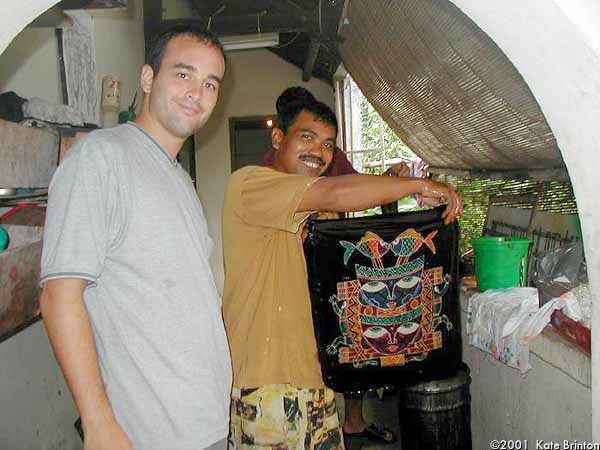
Steve's batik after the final rinse
~ * ~ RAMAYANA, or "Not that story again!"
There is a famous Indian epic called the Ramayana, and since Indonesia used to be a Hindu country, the story is popular here. Several different forms of local performance tell the Ramayana in pieces or in total.
Our first exposure was at the kecak dance in Bali that I mentioned before. We were enraptured by the music, an a capella group of men singing rhythmic, staccatto tunes. We liked it so much we saw two performances.
After that, Steve was interested in seeing the Wayang Kulit, which is a show of leather shadow puppets. We heard before going that it would again tell the Ramayana, but we were interested in the puppets, so went anyway. Unfortunately, this was the worst performance of all - the long and involved dialogue was completely in Sanskrit, and the puppets, while intricate and cool, hardly moved.

A child's version of the puppets, made from grass
(The real ones are elaborately made from leather)
I don't think Steve and I would mind if we never even heard the word Ramayana again... although that's probably impossible; there's even a department store here called Ramayana. So what is this famous story? Here's a synopsis of the best-known (and oft-performed) parts:
Shinta (female) and Rama (male) are sort of demi-gods, and a betrothed couple. King Rahwana (the bad guy) wants Shinta for himself, so in a typical ancient-world act, he kidnaps her. He lures Rama and his brother away from Shinta, then tricks her into approaching him so he can grab her and run off.
This story is interesting the first time, but began to rankle after two or three viewings. For one thing, the character of Shinta is always wearing a long skirt that is tight at the ankles, forcing her to walk with an awkward shuffle. But that's enough about that.On the way back to his kingdom, a big bird, the Garuda, sees and tries to intervene. Rahwana kicks his ass and leaves him to die. Just before he dies, Rama comes along and the Garuda tells Rama who has Shinta.
Instead of going there to sort it out himself, Rama sends Hanoman, a white monkey, to assess the situation. (Hanoman is a very famous character who also appears in other stories.)
In his castle, King Rahwana, in what seems an atypical ancient-world act, decides to persuade Shinta to marry him instead of forcing her. Despite what I'm sure must be an eloquent argument, Shinta refuses. She is elaborately sad for a while before Hanoman appears, bearing Rama's ring. Shinta gives him her hairpin in return and he leaves.
For some unknown reason, Hanoman then throws a temper tantrum and completely destroys a park in Rahwana's kingdom. He is caught, tied up, and set on fire. However, he has some kind of magical powers that enable him to resist the flames and turn them against his captors. He escapes.
Eventually, Rama and his entourage arrive and battle King Rahwana's flunkies. Sometimes this battle is shown, sometimes not. Shinta is rescued, and all seems to be well... but no!
Rama suddenly decides that Shinta is unclean and refuses her (after going to all the trouble to rescue her). Shinta, heartbroken, sets herself on fire. The gods spare her from the flames because of her purity, and Rama says, "oh, okay then" and marries her. The End.
~ * ~
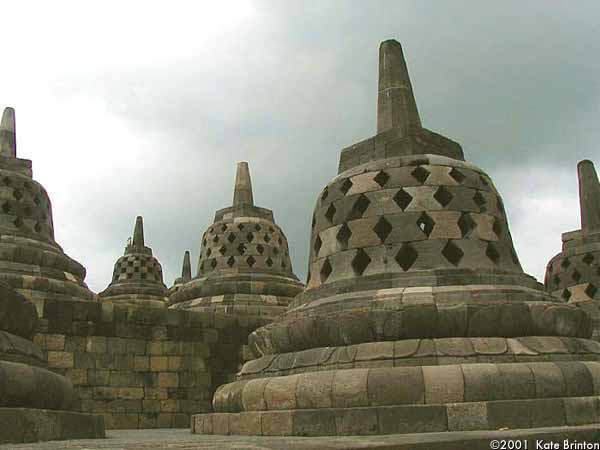
These are called stupas |
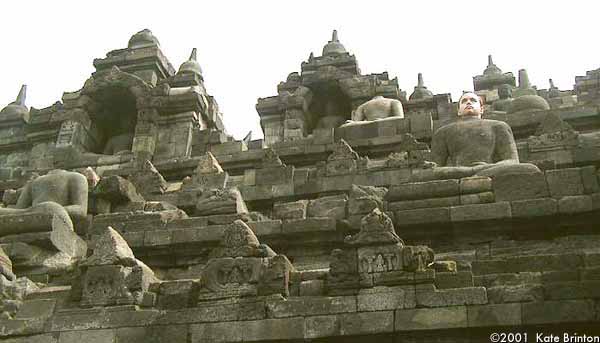
Steve felt a connection with the Buddha statues |
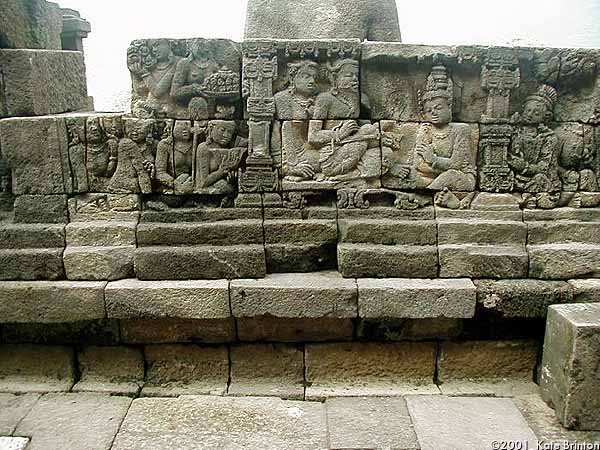
There were lots of cool carvings |
One of the weirder aspects of our visit was how interested in us people were. We were sitting at the top when I noticed two teenage girls in hijabs (headscarves) looking at us and whispering. In a few minutes, they came over and nervously asked if they could take a picture with us. We said sure, and suddenly there was a group of eight or ten teenagers crowding into the picture. This happened one or two other times as well.
~ * ~
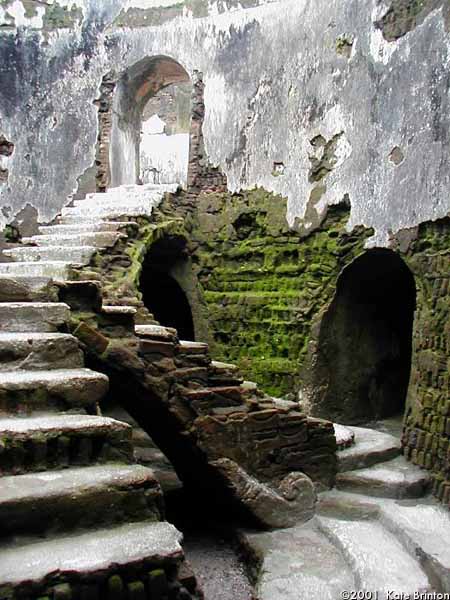

Our hotel has a swimming pool (a rarity), so we've been taking advantage of that and swimming most days to cool off. The weather has been mostly rainy, but that keeps things cooler, and almost every day there is a thunderstorm! I love storms, so that's a bonus.Tomorrow, we fly to Singapore for a few days, then to Vietnam. I'm not sure how easily we can get internet access in Vietnam, so my updates may be few and far between for the next three or four weeks.


